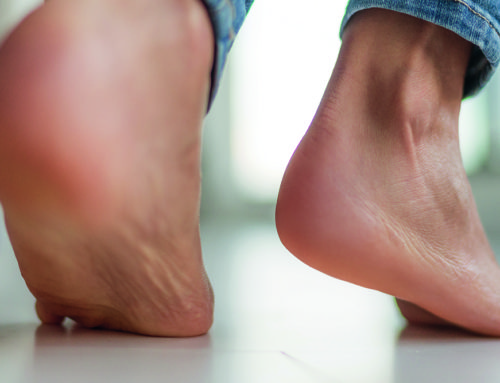SPR rounds up some of the latest research for Parkinson’s – and how it’s striking hope and inspiration into our future management of the progressive neurological condition.
This article was sourced from news stories highlighted by The Cure Parkinson’s Trust.
Parkinson’s, Leprosy and Crohn’s
Researchers at the University of Ottawa have announced a new discovery associated with a genetic form of Parkinson’s. Individuals with a genetic variation in a region of DNA for leucine-rich repeat kinase-2 (or simply LRRK2) have a higher risk of developing Parkinson’s, as well as leprosy, and Crohn’s disease. Why this is the case has been a mystery for a long time.
Now, the Canadian scientists have found that mice with a LRRK2 genetic variation differ in how they are able to deal with bacterial and viral infections. Curiously, mice with the LRRK2 genetic variation can handle a bacterial infection better than normal mice, but they fail to recover from certain viral infections.
Interestingly, the researchers found that this effect was most prominent in female mice in particular. In general, men are approximately 1.5 times more likely to develop Parkinson’s than women, but this trend isn’t observed in people with LRRK2-associated Parkinson’s where women have an equal chance of developing the condition.
The research also shows that LRRK2 increases inflammation, which could explain the link between Parkinson’s, leprosy, and Crohn’s disease – all medical conditions associated with inflammation. There are currently inhibitors of LRRK2 that are being clinically tested for the treatment of Parkinson’s. This new research suggests that some caution may be required in not reducing the levels of LRRK2 activity too low.
On the Move
The Parkinson’s community has long been told that exercise is important for maintaining a sense of wellbeing and better quality of life – but recently there have been some hints that high-intensity aerobic exercise might actually help reduce the symptoms of Parkinson’s. In fact, researchers at the Radboud University Medical Centre in Nijmegen (the Netherlands) published the results of a clinical trial evaluating an ‘at-home’ high-intensity exercise regime in people with Parkinson’s, and they found that it had a positive effect.
The team – led by Professor Bas Bloem (The Cure Parkinson’s
Trust Tom Isaacs Award winner for 2018) – recruited 130 people with Parkinson’s for the ‘Park-in-Shape’ study, and randomly assigned them to either the ‘aerobic intervention group’ (who trained on a stationary exercise bike at home) or the ‘active control group’ (stretching exercises). The participants were instructed to do their exercise for 30-to-45 minutes, three times per week for six months. Both of the groups in the study received a motivational app and remote supervision throughout the study, and they were clinically assessed before and after the six-month period.
The results suggest that after the six months of these two treatments, there was a statistically-significant difference between the groups in their clinical motor scores (as measured by the MDS-UPDRS) of 4·2 points in favour of aerobic exercise. That is to say, while the ‘active control group’ had an increase in their clinical motor score of 5.6 (indicating progression in the condition), the ‘aerobic intervention group’ increased their score by only 1·3 points, suggesting a slowing of disease progression.
The researchers note that a replication of the study is required to determine the long-term effectiveness of this intervention and to investigate the possible disease-modifying mechanisms that could be involved. But the study provides an example of the positive potential benefits from an exercise routine that can be performed at home.
Professor Bas Bloem commented, ‘This study is very important. We can now start researching whether much more long-term cycling can also slow the disease progression. Also, this new ‘exergaming’ approach that we have developed is very suitable to achieve long-term improvements in exercise behaviour for patients with a range of other disorders that could also benefit from regular exercise.’
A New Biomarker for Parkinson’s?
Researchers at Stanford University in America looking for new biomarkers of Parkinson’s recently identified a protein called MIRO that in initial data very accurately identifies people with the condition.
MIRO is a small protein that attaches to small structures inside our cells called mitochondria. Mitochondria are the power stations of cells, providing the energy for most biological activity. They are moved around inside of cells to wherever energy demands are greatest. MIRO is involved with moving mitochondria.
The researchers at Stanford, however, noticed that while in cells collected from healthy individuals damaged or stressed mitochondria will release the MIRO protein, in people with Parkinson’s MIRO remains firmly attached to the mitochondria. In fact, in more than 70 samples of cells from people with Parkinson’s, MIRO remained attached to mitochondria in 93 per cent of the cases (vs 0 per cent in the healthy control samples). The investigators are proposing that MIRO could be a useful biomarker to aid in the diagnosis of Parkinson’s as this phenomenon was also not observed in samples of cells from people with other similar neurodegenerative conditions.
The researchers next screened for and identified a number of molecules that can remove MIRO from mitochondria in cells for people with Parkinson’s. When they tested those molecules in models of Parkinson’s, the investigators found that the treatment rescued those models. Importantly, the researchers have now started a biotech company (CuraX) to further explore the utility of MIRO as a biomarker and to develop novel therapies targeting this protein.








